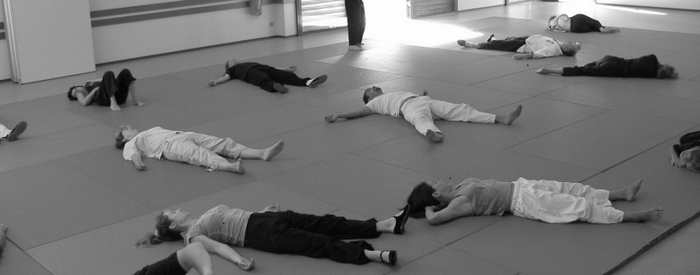WHAT IS BODY BEING ?
The term Body-Being was coined by Peter Ralston when he developed his martial art system, Cheng Hsin. At first glance, it may seem like a simple combination of two words, "body" and "being". However, it has a deeper meaning that becomes clearer through years of practicing with a Cheng Hsin mindset.
One of the key ideas in Cheng Hsin is "body-mind alignment". When we experience a lack of alignment, we may notice that our mind and body are not in the same place at the same time. This can happen when we are not fully aware of our body or when we take it for granted. Our body compensates for this lack of awareness, leading to long-term issues such as pain and malformation.
To move effectively and effortlessly, we need to be aware of our body and how it moves in space. By experiencing our body as an object in space, we can learn to feel gravity, balance ourselves, and align our body and mind at every moment. This is the art of Body-Being.

"I would like to see martial arts turned into a place for the development of human beings, and of honesty. A place where we can see what it is that we do in life that really makes us suffer and hurt, or be ineffective and incomplete."
"Martial arts are an excellent place to see that, if done right. Otherwise -- and ninety percent of the time it is otherwise -- it is done like everything else, just to add to our survival and protection, our "rightness." It's the same approach we have to everything else, and only ends up increasing resistance and separation."
Peter RALSTON
Why is it important to know our body? The answer should be obvious, but it is not so obvious for most people, myself included. Throughout our life, we take our body for granted. The less we connect with our body, the more the body has to compensate to our everyday needs, and by default, the less we know what the body is doing at the present moment. Because the body is very intelligent, it will be able to do as told. But what are the consequences of these long term compensations, they will lead to malformation of the body: back pain, neck pain, hip pain, knee pain, ankle pain, shoulder pain, elbow pain, wrist pain, etc.
Cheng Hsin incorporates five principles and seven structural points that help practitioners train their body and achieve a state of relaxation, presence, and balance. By paying attention to how we move and correcting any discrepancies as they happen, we can improve our body's alignment and prevent pain and injuries.
In addition to physical practice, Cheng Hsin also emphasizes mental connection with heaven & earth, which allows us to stretch our body and stay relaxed while moving. Practicing Body-Being through tai chi, qi gong, yoga, boxing, or sword classes can help us improve our connection with our body and achieve a state of harmony and balance.


